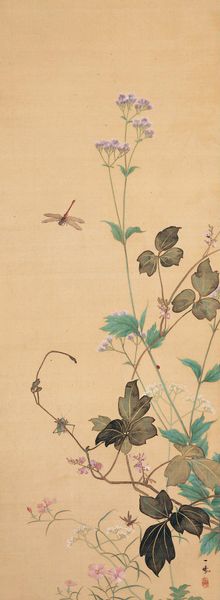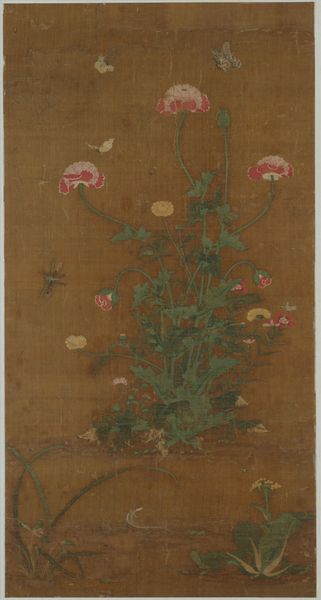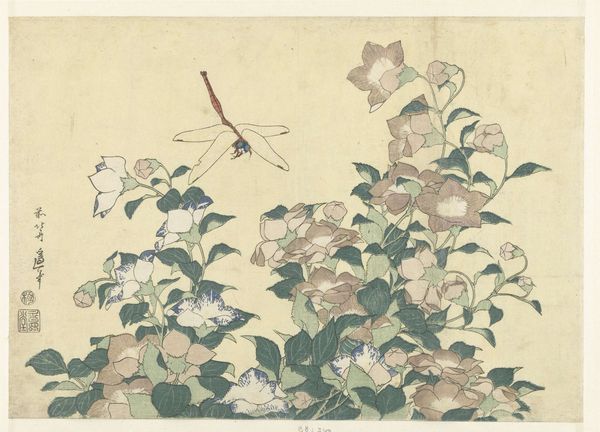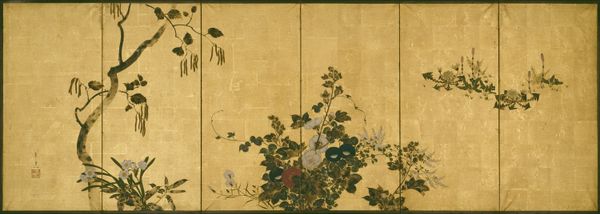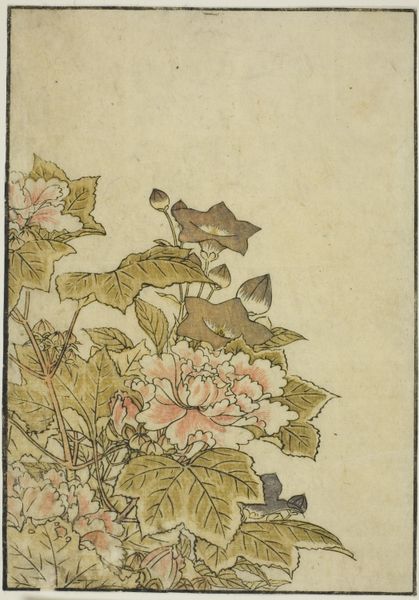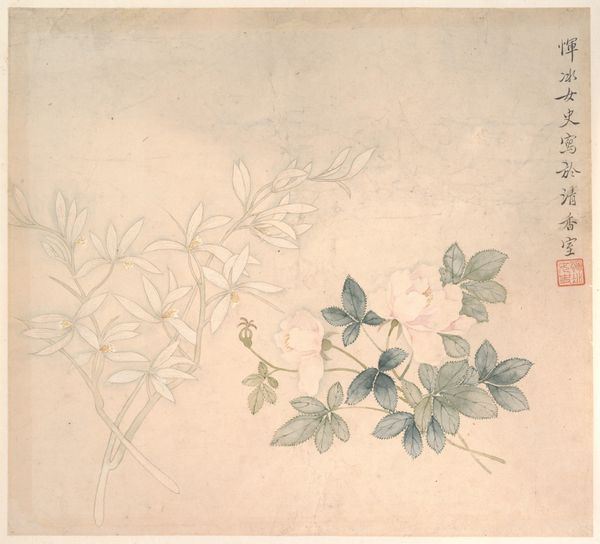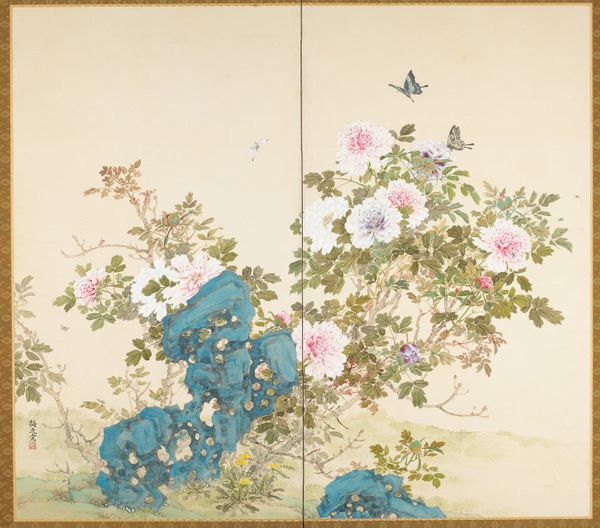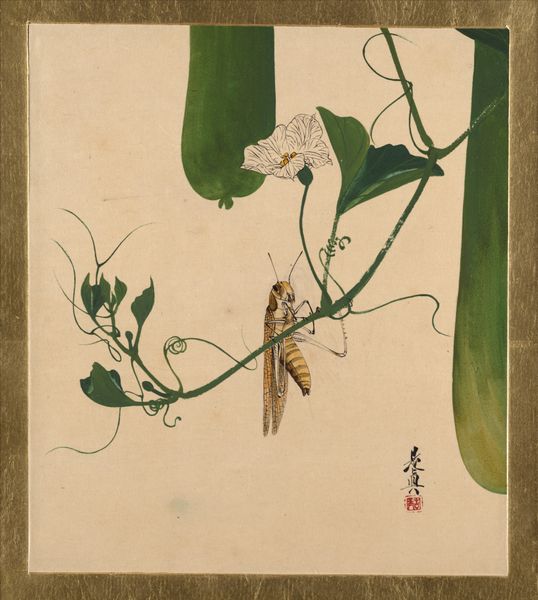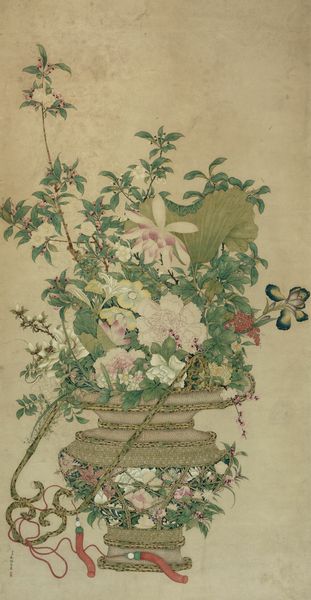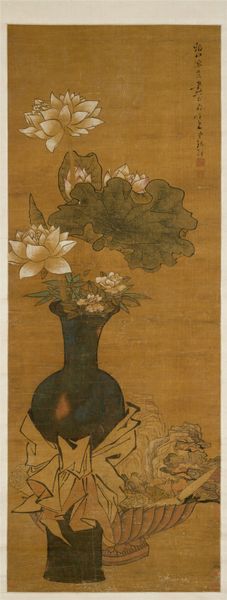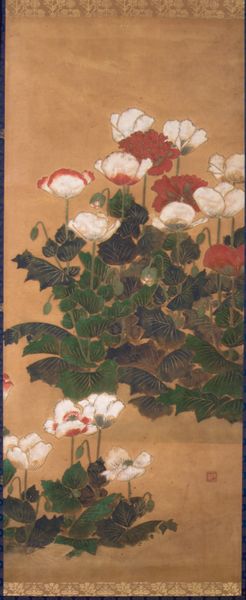
plein-air, watercolor, hanging-scroll, ink
#
organic
#
water colours
#
plein-air
#
asian-art
#
ukiyo-e
#
figuration
#
watercolor
#
hanging-scroll
#
ink
#
line
Dimensions: 42 5/16 × 19 9/16 in. (107.47 × 49.69 cm) (image)68 1/16 × 25 15/16 in. (172.88 × 65.88 cm) (mount, without roller)
Copyright: Public Domain
Curator: Nakabayashi Chikkei's "Mantis and Butterfly on Sponge Gourd," a watercolor and ink hanging scroll from 1857. Editor: It has a very serene quality, wouldn't you agree? The muted palette and delicate linework create such a tranquil atmosphere. Curator: Absolutely. But I'm drawn to how this tranquility is constructed through specific artistic choices, influenced by the material realities. The paper itself, its texture and absorbency, dictates how the ink and watercolor behave. The act of applying each brushstroke, each careful delineation of the mantis or the leaves...it reflects the labor and skill invested in producing this piece for consumption, perhaps as a sign of status. Editor: I see that, but consider the composition itself. The seemingly casual arrangement of the gourd vine, with the mantis and butterfly almost playfully positioned. It hints at a deeper symbolic language—perhaps the fragility of life, or the interconnectedness of the natural world. The artist guides our eye, and these natural forms have an order and hierarchy of significance. Curator: I agree with the themes of nature and connection that are illustrated here. We see here the connection between art and the commodification of nature; the very subject of the scroll could've served practical uses: sponge gourds are edible and useful for washing, adding another layer of engagement for the viewers. Editor: Note the masterful deployment of empty space. This enhances the sense of depth, drawing the eye through the composition while lending prominence to these very humble organic details: the slightly decaying leaves, the dewdrops, or the fragile, almost ephemeral, wings of the butterfly. It evokes a sense of 'mono no aware' - the pathos of things. Curator: And let's not forget that Chikkei was operating within the context of a burgeoning artistic market. These works, while appearing spontaneous, were part of a sophisticated system of artistic production and exchange. Editor: Still, ultimately, I think its power resides in its exquisite balance of form and content. It achieves so much, materially speaking, with very little—the formal organization amplifies the cultural experience the artwork communicates. Curator: Yes, considering all, its simple appearance is quite deceiving. I think, its connection to a specific social context is just as interesting as the art itself. Editor: A fascinating interplay, wouldn't you say?
Comments
minneapolisinstituteofart almost 2 years ago
⋮
Various insects explore the twisting vines, blooming yellow flowers, and curving contours of the hanging sponge gourds (loofahs) in this painting. Sponge gourds were brought to Japan from China and cultivated for multiple uses, including as food, cosmetics, and medicine. The dried fibrous interior was also used as a sponge or woven into sandals. Nakabayashi Chikkei was the son of Nakabayashi Chikutō, a nanga (Chinese-style) painter. Earlier in his career Chikkei primarily painted ink landscapes, staying faithful to his father’s style. Beginning in his thirties, he experimented with different workshop styles and expanded his repertoire to include studies of nature, as reflected in this painting.
Join the conversation
Join millions of artists and users on Artera today and experience the ultimate creative platform.

